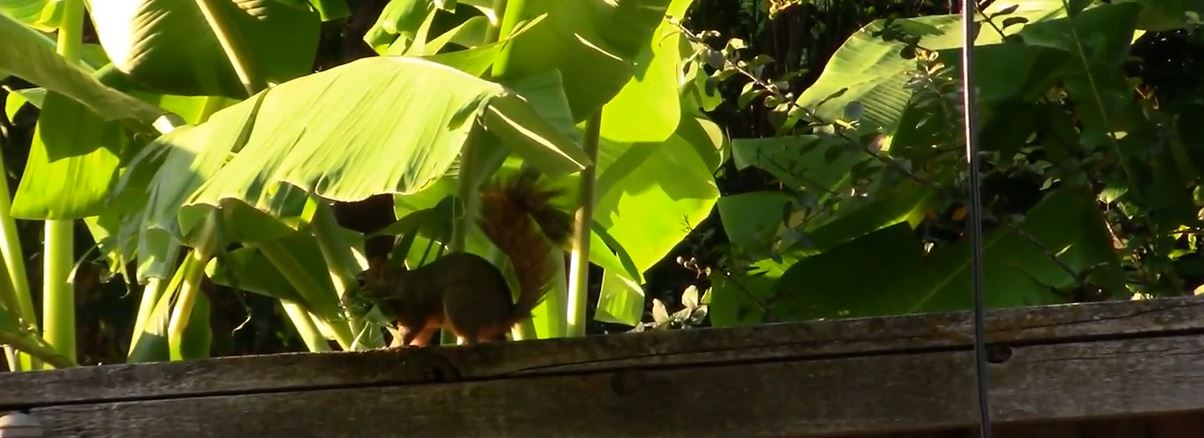About Flying Squirrels: Appearance, Biology, Life Cycle, Habitat, Diet, And Behavior

If you notice a nuisance animal on your property or in your home, one of the first things you should do is try to identify it. Although flying squirrels aren't the most common wildlife to make a home next to yours, they will occasionally do so. Whether you simply want to be prepared or learn more about the flying squirrels that you are now sharing land with, the following information can help. By knowing more about their biology and behavior, you can figure out whether they will damage your property or you can peacefully live together.
Appearance
There are two types of flying squirrels found within North America: the northern and southern flying squirrels. Each of these species is brown-gray in color. The southern graying squirrel has white belly fur while the northern flying squirrel's bully fur is gray along the base. Southern flying squirrels are also smaller, typically between 8 and 10 inches long while their northern counterparts are between 10 and 12 inches long.
Despite their name, flying squirrels do not actually fly; they glide. They have a unique furry and stretchy membrane between the back and front legs that lets them glide through the air. Other traits of these animals include stubby flattened tails and large eyes. These animals have thick paws which cushion their landing when they reach a new tree.
Biology And Life Cycle
Most flying squirrels live around five years when in the wild, but in captivity, they can reach age 10. Northern flying squirrels will mate only one time each year while southern flying squirrels do so twice. Gestation typically lasts about 40 days, at which point the mother will give birth to two to seven babies. At birth, they are naked and blind. At around a month of age, they will open their eyes and start developing fur. Either type of newborn flying squirrel will rely on its mother for about two months.
Habitat
This wild animal tends to live in coniferous or deciduous forests or woodlands. Southern ones choose beech, hickory, maple, and oak forests while northern flying squirrels stick to coniferous or mixed forests. These flying squirrels will mark their routes in the forest using scent glands found in their cheeks. They will use the abandoned nests of other squirrels and birds or find a home in nest boxes, woodpecker holes, or snags. During the colder winter months, flying squirrels will nest in groups as a way of staying warm. On occasion, they will also share their nests with other types of animals.
You can find the southern flying squirrel in the eastern United States within the area between Maine, Florida, Minnesota, and Texas. Northern flying squirrels don't have a set area where they are commonly found. Instead, they have smaller areas where they live, including the west coast reaching Montana and Idaho and the northeast. They also cover an extensive area within Canada.
Diet
Flying squirrels are classified as omnivores so they have a varied diet. Just some of their favorite foods include insects, fruit, fungi, nuts, and seeds. Southern flying squirrels are among the most carnivorous of this species since they will also eat birds, carrion, and eggs.
While flying squirrels eat nuts as other squirrels do, they do so in a different manner. Other squirrels typically break the entire shell, but flying squirrels will make a single hole within the shell.
Flying squirrels forage along the ground of the forest to find food. Because they run awkwardly and slowly on the ground, they will usually hide if they are startled and not close to a tree.
Behavior
To complete their signature gliding motion, flying squirrels simply launch themselves from tall branches and spread their limbs. They rely on their legs to steer and their tail to brake. A single glide can take one of these animals over 150 feet. If they plan on continuing traveling, the squirrels will climb to the top of the tree they land on and repeat the process.
These gliding abilities also help flying squirrels escape predators. After they land on the trunk of tree, the squirrels will immediately scurry towards the other side to hide from predators. They are still frequently preyed on by climbing mammals, tree snakes, hawks, and owls. Other natural predators include domestic cats, other birds of prey, coyotes, and raccoons.
You aren't likely to see flying squirrels very frequently, even if they live on or near your property. This is because they are nocturnal animals. Flying squirrels tend to be less active during winter as well, although they don't hibernate. They tend to collect food throughout the year to help them survive during winter and are capable of collection 15,000 nuts in a single season.
Some people consider keeping flying squirrels as a pet, but this is typically a bad idea. They require an extensive amount of care and some areas have laws preventing these animals from being pets.
Read the How to get rid of squirrels page for helpful information and to learn more about About Flying Squirrels: Appearance, Biology, Life Cycle, Habitat, Diet, And Behavior

